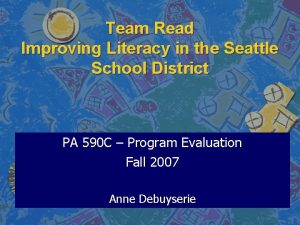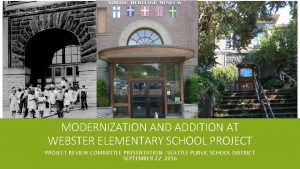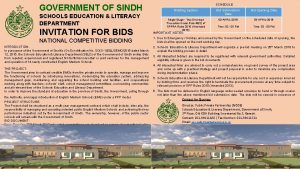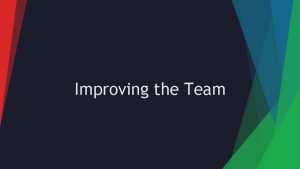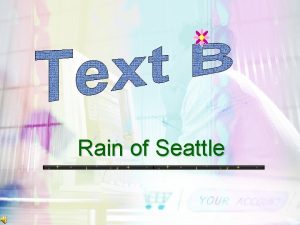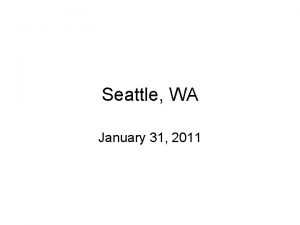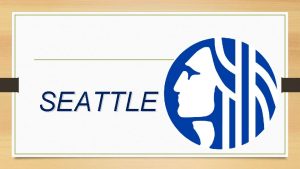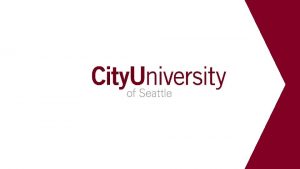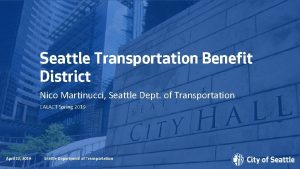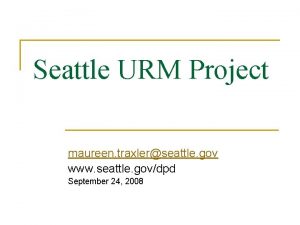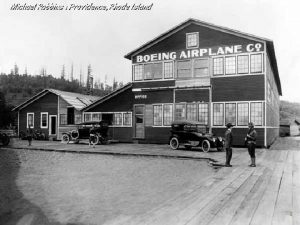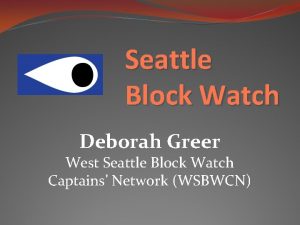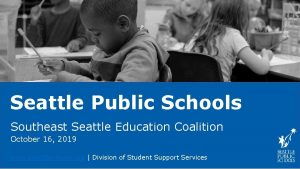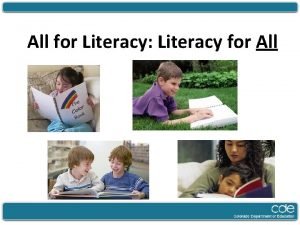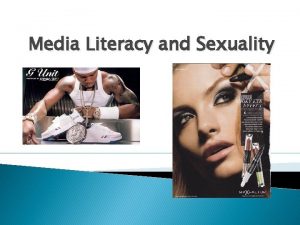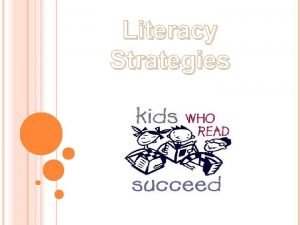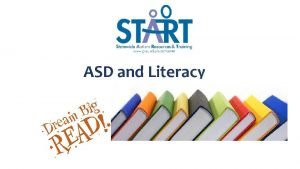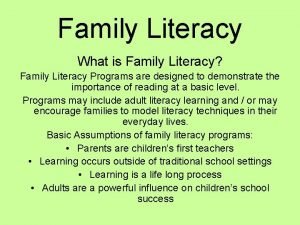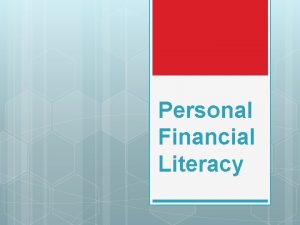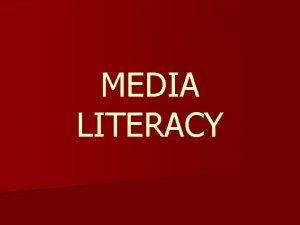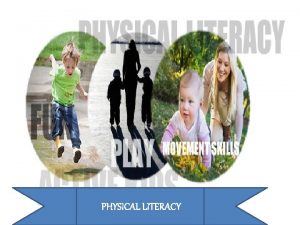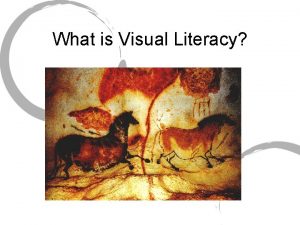Team Read Improving Literacy in the Seattle School

























- Slides: 25

Team Read Improving Literacy in the Seattle School District PA 590 C – Program Evaluation Fall 2007 Anne Debuyserie

“. . . a Seattle School district tutoring program dedicated to increasing the reading skills of elementary students through year-long coaching by high school students . . . The program's goals for participating high-school tutors are to develop work experience, a sense of responsibility and accomplishment, and to learn the rewards of community service. ” (Team Read Mission Statement, 1998)

What is Team Read? Private-public partnership to improve literacy in Seattle Public Schools n Cross-age tutoring program using high school student as tutors n Started in March 1998 with a threephase implementation n June 1999: 10 schools, 335 students, 300 coaches n June 2000: addition of 7 schools n

Team Read- Org Chart

Team Read Stakeholders Craig Mc. Caw (and wife Susan): Businessman n John Stanford: Seattle Schools Superintendent n Joan Dore: Seattle Schools Reading Specialist n Tricia Mc. Kay: Team Read Program Mgr n Team Read Advising Board: Seattle School District Staff, Alliance for Education pgm representatives, Mc Caws, community representatives. n Additional investors joined by year 2. n

Who is Team Read? n Coaches – Strict selection guidelines – High expectations from Team Read leaders – Compensation n Readers – School selection comes first – Student selection based on reading level – Eligibility based on need – First-come, first-serve basis – Low socio-economic background

Who is Team Read? n Site Coordinators – Part-time, teachers or school staff – Meet informally with Tricia Mc. Kay for feedback n Volunteers – Needed due to amount of work – Partnership with VISTA/Americorps and U. of Washington Pipeline – Assist site coordinators

Team Read Session n n Two 1 hr session per week during school year Standardized session format and structure – – 3. 00 PM: coaches arrive 3. 15 PM: snack with reader 3. 30 pm: reading session begins 4. 15 PM: reading session ends/ coaches fill out paperwork – 4. 30 PM: reading coaches leave n Opportunity for site coordinators to be creative

Team Read Evaluation Results 1 st year evaluation: not as positive as expected n 2 nd year: promising but Team Read’s impact not as promising as hoped n Tricia Mc. Kay disappointed by results and wonders if findings provide her with the information needed for improvements n Questions about the accuracy of results. n

Team Read Evaluations n n n Evaluation conducted by Margo Jones, statistician by trade. 17 schools in the program by June 2000 but only 10 used in the evaluation. 3 main objectives to show Team Read’s Impact: – Goal#1: Do the reading skills of the student readers improve significantly during their participation in the Team Read program? – Goal#2: How does the program affect the reading coaches? – Goal#3 What is working well, and what can be improved?

Evaluation Methods Goal #1 n Goal #1: Reading skills. Two-fold approach Grade Pre-Test Post-Test Metric 2 DRA Fall 1999 DRA Spring 2000 Test Level 3 DRA Spring 1999* ITBS Spring 2000* NCE 4 ITBS Spring 1999 WASL Spring 2000 Scale Score 5 WASL Spring 1999 ITBS Spring 2000 NCE

Apples and oranges Grade Pre-Test Post-Test Metric 2 3 4 5 NCE

Evaluation Methods Goal #1, Cont’d 2 nd method: determine proportion of Team Read participants who moved from below grade level test score to ator above level compared to all students from entire district n Note: one of the selection criteria to be in Team Read is to be within bottom 25% of district reading test score n

Evaluation Methods Goal #1 n n n Both methods for goal 1 are flawed. Note from Jones in report confirming problems with different tests. “The question then becomes ‘Is it reasonable to assume that the pre- and post-tests measure the same skills? ’ The evaluator adopted a correlation criterion for answering this question. If the correlation between pre- and post-tests was near or above. 8 (see footnote 5) (as was the case for the 2 nd grade, where pre- and post-tests were essentially the same), the pre- to post-test change score was interpreted as a gain score. If the correlation coefficient was much less than. 8, no analysis was performed. ”

Evaluation Methods, Goals #1 Assessment n Visible problems with tests: – Pre and post-tests do not measure the same skills except in 2 nd grade – All Team Read participants are within the bottom quartile of the reading test scores and can’t be compared with students district-wide. – Analysis could not be carried out for some grades (3 rd) due to incompatibility of reading tests

Evaluation Method, Goal #2 n n n Method: questionnaire given to coaches during their last week of coaching. Goal: to assess the impact of Team Read on coaches. Identify 3 main areas of job satisfaction: – How positive is their experience with TR? – Extent to which the coaches feel that TR helps students readers – How supportive is TR’s site coordinators and staff?

Evaluation Method, Goal #2 Assessment Jones results showed that coaches were satisfied with their job and felt a sense of pride and accomplishment. n Test performed by Jones was successful in meeting its goals, unlike in Goal #1. n Some questions provided answers as to what to improve in the program. n Test is useful to the program manager n

Evaluation Method, Goal #3 Method: interviews with major stakeholders, one site visit, review of last 5 years’ research literature on cross -age tutoring and last 3 years research on best practices. n Goal: assess the overall progress of the program. n

After the Evaluation Margo Jones makes her recommendations based on her findings to improve the efficacy of Team Read. n Tricia Mc. Kay reads the evaluation but fail to see what the results are telling her about the program n

Evaluation Methods - Summary Goals Methodology Reading improvement among elementary students n Analyzed standardized test scores for 10 Coach development n Surveyed coaches by questionnaire Program implementation n. Interviewed stakeholders of 17 Team Read schools. n Rate of increase on pre- and post- tests. n Percent of students moving from below reading level to at/above grade level. n Collected data by grade level and by school. n Compared Team Read results to district scores. n. Observed Team Read session n. Reviewed other studies

Evaluation Problems Academic v. Practitioner approach. n Result presentation. n Research design flaws. n – Not all the data was analyzed – Comparison with dissimilar items – Statistical analysis stretched Evaluation only covers 3 goals. n Lack of communication between the evaluator and the program manager. n

What Could Have Been Done Better?

Impact: 2005 -2006 Reading Results From Team Read’s 2006 Annual Report. http: //www. teamread. com/downlo ads/team_read_106903_report_pro of. pdf

Team Read Update - 2006 n Program Evaluation Results for 2005 -2006 School Year – 70% of 2 nd graders and 52% of 3 rd graders were reading at/above or approaching grade level – 54% of 2 nd graders and 35% of 3 rd graders gained greater than 1. 5 grade levels in reading – 98% of the parents of 2 nd & 3 rd graders and 92% of their teachers reported increased reading skills as a result of participation in Team Read – 76% of 2 nd & 3 rd graders said that reading was more fun since joining Team Read

 Team read
Team read Multi-cultural literacy
Multi-cultural literacy M.i.l subject
M.i.l subject How was mr nestor punzalan affected by being wrongfully
How was mr nestor punzalan affected by being wrongfully Cyber literacy and digital literacy
Cyber literacy and digital literacy Albers placement center
Albers placement center Seattle university school of theology and ministry
Seattle university school of theology and ministry Ridgeway high school seattle
Ridgeway high school seattle School modernization seattle
School modernization seattle Bureaucratic bypass syndrome
Bureaucratic bypass syndrome Team spirit becomes team infatuation
Team spirit becomes team infatuation The white team cheers for the blue team, just like
The white team cheers for the blue team, just like School education and literacy department
School education and literacy department Hình ảnh bộ gõ cơ thể búng tay
Hình ảnh bộ gõ cơ thể búng tay Ng-html
Ng-html Bổ thể
Bổ thể Tỉ lệ cơ thể trẻ em
Tỉ lệ cơ thể trẻ em Voi kéo gỗ như thế nào
Voi kéo gỗ như thế nào Tư thế worm breton là gì
Tư thế worm breton là gì Chúa sống lại
Chúa sống lại Các môn thể thao bắt đầu bằng tiếng đua
Các môn thể thao bắt đầu bằng tiếng đua Thế nào là hệ số cao nhất
Thế nào là hệ số cao nhất Các châu lục và đại dương trên thế giới
Các châu lục và đại dương trên thế giới Công thức tiính động năng
Công thức tiính động năng Trời xanh đây là của chúng ta thể thơ
Trời xanh đây là của chúng ta thể thơ Mật thư tọa độ 5x5
Mật thư tọa độ 5x5
